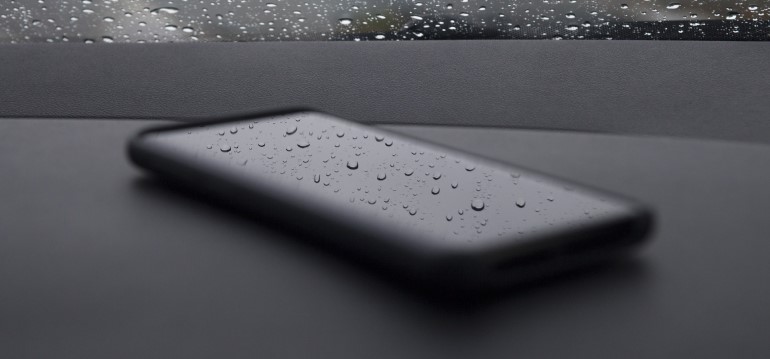Dropping phones in water is a regular occurrence with a staggering 1 in 4 people (28%) likely to do it at some point. With 80 million mobile phone subscriptions in the UK, that equates to a huge amount of damaged technology.
But whilst liquid protection features have become incorporated into newer mobile phones, manufacturers have not yet been able to create devices that are 100% liquid-proof. Reasons include inaccurate soft-tooling methods in the manufacturing process that can create new ways for liquid to seep in. Protective features can also add weight to a device, a significant purchasing barrier for consumers wanting smaller, lighter phones. As a result, customers are left to look for their own means of liquid protection.
Consumers are taking matters into their own hands
Water ejection apps such as Sonic or Water Eject Shortcut are increasing in popularity but have their limitations. For example, the tones generated from the Sonic app only remove water from the device’s speaker and don’t stop it infiltrating the internal parts that can subsequently cause it to fail.
Incorporating liquid protection from the outset is now essential. People use mobile phones everywhere, from restaurants to gyms, shops to offices. 91% of people even confess to taking their phone to the bathroom. The risk of liquid damage is higher than ever.
Liquid-proofing at the design stage
To extend the life of mobile devices, original equipment manufacturers (OEMs) must consider liquid-proofing at the design stage.
While it adds an extra layer to the development process, in the long term it can pay dividends. A longer life means second-hand devices can be sold more easily and consumers are less likely to try and tackle the challenge themselves.
There are also environmental benefits at play. With less than 40% of electricals being recycled, the e-waste problem is huge and getting bigger and its harmful chemicals can end up in our soil, water and air.
Helping mobile devices to last longer not only positively impacts our planet by helping to enable the circular economy but also supports the sharing and reuse of excess technology. That in turn reduces the need for landfill and the incidence of e-waste. And, with new right to repair rules coming into force to encourage the repairability of electronic products, applying these regulations to mobile devices is surely not far away. Options for effective liquid protection
To realise these significant benefits, the right type of liquid protection must be applied by OEMs and they do have choices. Options include physical protection such as gaskets and O-rings, and liquid protection, such as sprays, dips and brushed-on conformal coats. Alternatively, parylene conformal coatings have been used historically, and are applied by chemical vapour deposition under a vacuum.
The most efficient and cost-effective option is Plasma Enhanced Chemical Vapor Deposition (PECVD). Often referred to as nano-coating technology, it takes place at microscopic level and is increasingly used for a range of industries from optics and biomedical to aerospace and automotive.
Cost-savings are achieved by the low cost of applying this technology on the assembly line and eliminating scrap and by ensuring low return rates.
PECVD is also highly reliable due to the level of magnification to treat every part of a circuit board, including complete underfill. And thanks to the ionised gas-based process, there are no dynamic shifts or cracks to the coating once applied.
Treated products are also fully reworkable, which means that OEMs can, if required, resolder components and rework boards rather than having to throw them away which saves costs, reduces the need for landfill and enables regulations around waste to be more easily met.
The future of mobile device design is liquid-proofing technology
With mobile device ownership at an all-time high, incorporating preventative PECVD technology at the design stage makes perfect sense – it reduces costs, enables sustainable practices and avoids detrimental user intervention.
Now is the time for OEMs to take the lead and demonstrate the environmental and financial credentials of liquid-proofing to key stakeholders so it becomes an intrinsic part of mobile device design.

